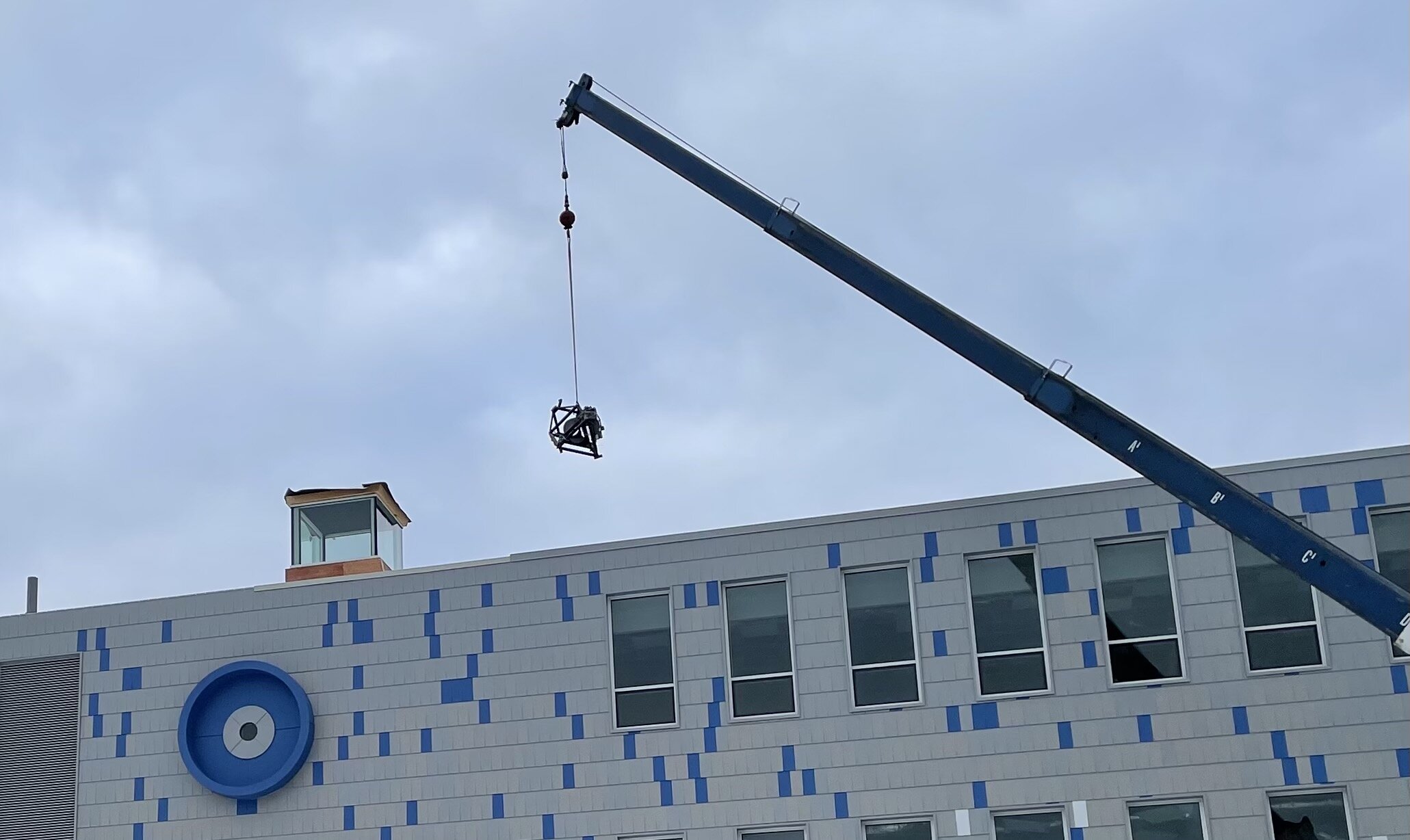Crane Company Makes Christmas Eve Delivery of Camera Obscura to Roof of Children’s Museum & Theatre of Maine










PORTLAND, Maine - The one-of-a-kind periscopic camera obscura owned by the Children’s Museum & Theatre of Maine was carefully raised by the Cote Crane Company onto the roof of its 30,000 square foot facility at Thompson’s Point today. This marks the beginning of the installation of hands-on, family-centered exhibits at the Museum & Theatre which are scheduled to open in Spring 2021. When complete, the new facility will contain a 100-seat state-of-the-art theatre, a 10,000 sq ft science center, an entire floor devoted to arts, culture, and community, and over a 1/2 acre of outdoor play area.
“Public camera obscuras are rare, and the engineering and optical quality of ours is one of a kind. Moving the camera obscura has given us even a closeup look and insight into the thought and care of the original, elegant design. It has been part of the legacy of the Museum and Theatre for 27 years and it’s really exciting that it has arrived at its future home in the new building,” said Chris Sullivan, the exhibits consultant to the Museum & Theatre.
The camera obscura will offer visitors hands-on experimentation with light; the ability for visitors to turn and focus the unit themselves is part of what makes this camera obscura unique. While there is a larger camera obscura in the U.S., it is not able to rotate its range of view. In the Illuminate exhibit, families will be able to position the periscopic camera to look out over the Fore River and the City of Portland skyline, as well as watch Amtrak Downeaster, Portland International Jetport, Concord Bus Lines, and I295 traffic.
On the roof of the new facility at Thompson’s Point, the south end of the camera obscura is supported by the steel beam that was signed by all the attendees of the press conference announcing the capital campaign and construction in February 2020. The overall size, scale, and form of the building were inspired by the shipping and railroad industrial heritage of Thompson’s Point. The proportion of windows and doors was designed to be compatible with the warehouses and sheds on Thompson’s Point. The building exterior is clad in colorful metal shingles that are arranged in dynamic, playful patterns inspired by the natural setting of Thompson’s Point, such as ripples of the Fore River or sunlight through the riverbank forest canopy.
Background of Museum & Theatre’s Camera Obscura
When the Children’s Museum & Theatre moved into its Free Street location in 1992, the camera obscura project and collaboration began with Kodak, Inc. In 1993, Richard Albrecht, an engineer and research associate at Eastman Kodak designed the camera obscura. Kodak engineered all of the lens and optics components and a local metal fabricator created the metal frame structure to house it. The cupola on the roof of 142 Free Street was added as a housing.
As a sophisticated imaging device, the Museum & Theatre’s camera obscura transferred a “light picture” of the Free Street neighborhood from the cupula on the roof of 142 Free Street down into an exhibit for nearly thirty years.
After its deinstallation in May of 2020, the camera obscura went into storage until the new Illuminate exhibit space was ready for its re-installation at Thompson’s Point.
Background on Camera Obscuras
The history of camera obscuras spans many centuries in Chinese, Islamic, and Greek exploration of astronomy and optics. The natural occurrence of upside-down reflections of objects through tree canopies, knotholes, or other small openings led to experiments with reflection and refraction of light. The earliest written account of the working of a camera obscura dates to 4th century BCE Chinese text attributed to a Han Chinese philosopher. A historically important tool in both art and science, Leonardo da Vinci used a camera obscura to correctly explain how the eye works. The camera obscura helped Renaissance artists master perspective, early astronomers to study the sky, and chemists/ entrepreneurs to invent photography.
